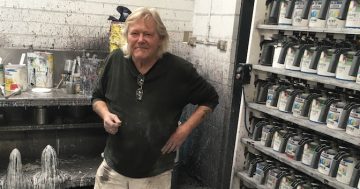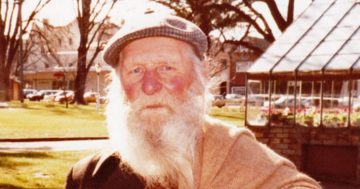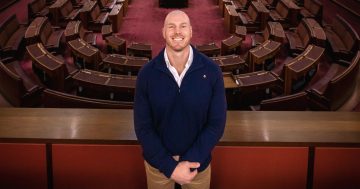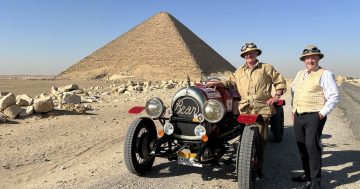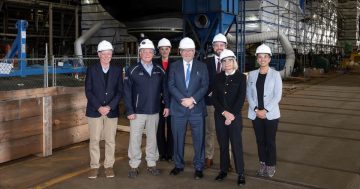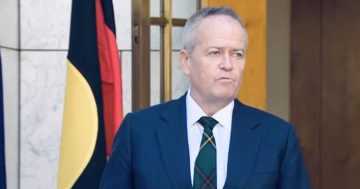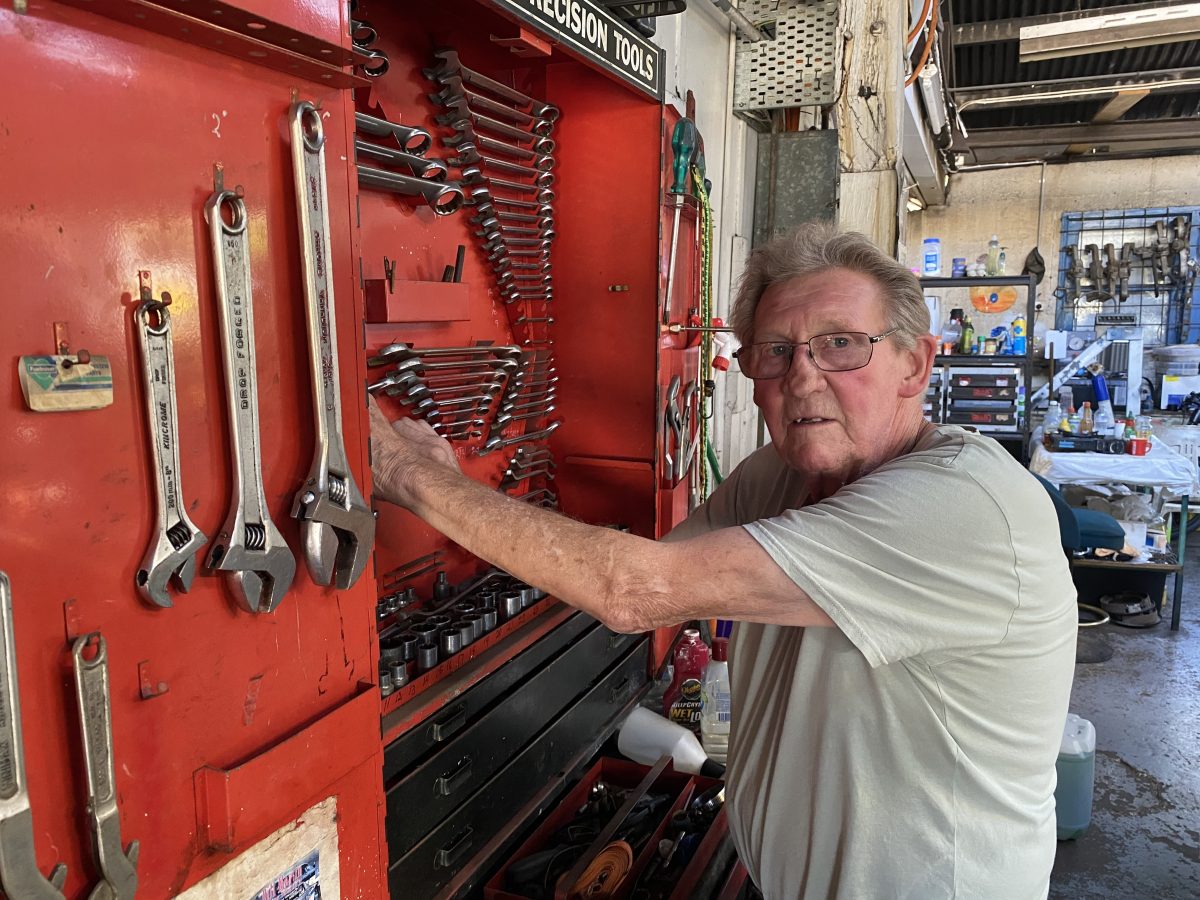
Goulburn’s caring motoring community raised enough money in 1986 to buy Bill Martin this toolbox, which he has used every day since a fierce fire almost took his life, along with his wife, Elaine’s. The fundraising also amounted to enough to buy him a new mechanic’s hoist. Photo: John Thistleton.
Bill Martin didn’t discover how exceptionally strong the bonds of friendship were from building the Goulburn Speedway in the 1970s until a horrendous fire almost killed him and his wife Elaine and destroyed their business 16 years later.
A mechanic for motor wrecker Frank Nicastri, Bill went out on his own in his early 20s, towing cars late at night to get his workshop established.
Years later in Wayo Street, North Goulburn, disaster struck. Worse still, he had forgotten to renew his insurance.
In 1986 he was changing a fuel filter underneath a $120,000 Mercedes Benz raised on a hoist. Elaine was in the workshop, helping with the end of financial year bookwork. It was -6 degrees Celsius. She sat in front of a kerosene heater, about 22 feet away from the car so she could check financial details with Bill while he worked.
“Some of the fuel dribbled down the fuel line underneath the car,” Bill said. Apparently, it spread fumes too close to the heater.
“I saw a blue haze coming towards me; next thing, boom!” Bill said. “I got blown out of the door. I had a bar blocking the fuel line that I was still hanging onto. When (the blast) blew me out the door I pulled the bar out.
“So the raw fuel went straight into the fire,” he said. “I tried everything to put it out but nothing worked. Then I realised Elaine could not get out of the shed. I was yelling out to her to go around the back way, then realised I had the keys to the back door in my pocket.”
With a jumper pulled over his head he ran into the flames, and having fuel on him, immediately caught alight. Elaine put him out as he rolled on the floor.
They were trapped. They couldn’t see in the black, smoked-fill building. Bill then placed Elaine in a washroom, even though drums of oil and fuel were stowed there.
His last escape option was a wooden door, reinforced with steel. By now desperate and gasping for air, Bill karate-kicked a panel out of the door. Once out of the blazing shed he unlocked the washroom for Elaine.
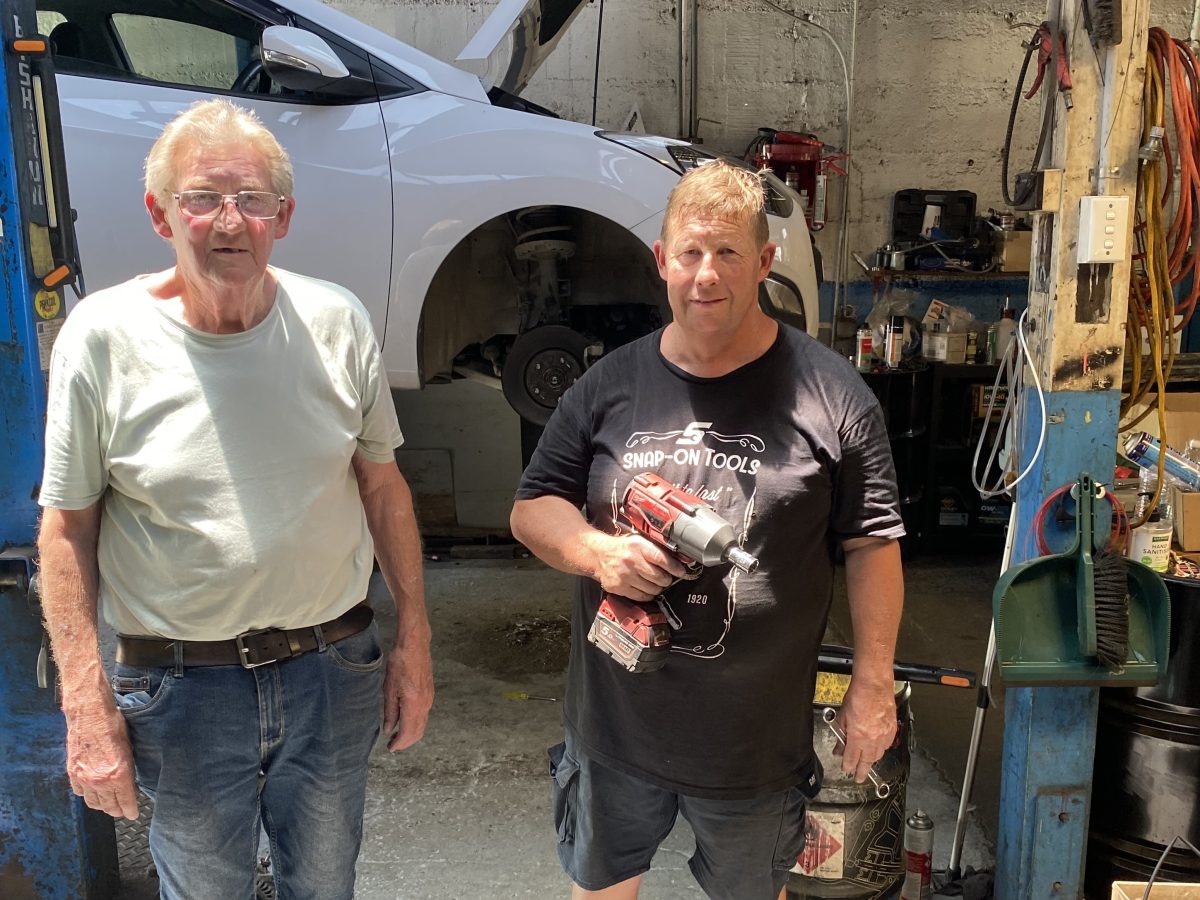
Bill Martin with his son Christopher in their workshop. Out the front of their workshop stand the family’s numerous racing trophies from Goulburn, Sydney, Tralee near Canberra and Oran Park. Bill has a network of specialists like himself to help build high-performance engines. Photo: John Thistleton.
Five cars were destroyed. A drum of fuel blew an entire wall out of the 60-foot long shed and a home attached to the shed was destroyed. Their family home was lost in the expensive aftermath.
Recounting the Goulburn motoring community’s offers brings Bill close to tears. “Mick Jackson came up and gave me $100 and said, ‘You’re going to need this,’” he said.
“At one stage there, we were getting desperate but didn’t want to borrow money, we wanted to try and fight it out,” he said. “I was doing jobs out of the boot of my car, using customers’ tools.”
Unlike his exhausted business capital, Bill’s social capital was overflowing from his younger years in the 1960s, when Chic Thyne and Tommy Malone built a car to race at Kembla Grange. Roger Emmerton and Bill followed their example building and racing an old FJ Holden.
Others followed including David House, Des Keys and Neville Burrows, who took an interest in the speedway scene. They formed a club and set about building their own speedway at Governors Hill, Goulburn.
Bill worked for motor wrecker Frank Nicastri, an Italian immigrant who became a powder monkey on Warragamba Dam before his motoring days. Frank put his dynamite expertise to good use blowing a section of the hill for a racetrack.
John Norris became secretary and a driving force for fundraising, including hay carting, spud digging and chook raffles. “We had more than four or five chooks in the oven at the Exchange Hotel,” Bill said. “Everyone used to be sitting up there eating chook all night.”
Later, his departure from Franks Motor Wreckers came swiftly while working on a car. “I walked past the headlight and a snake stuck its head out,” he said. “I had been getting a handbrake cable out, and had my head up underneath there,” he said.
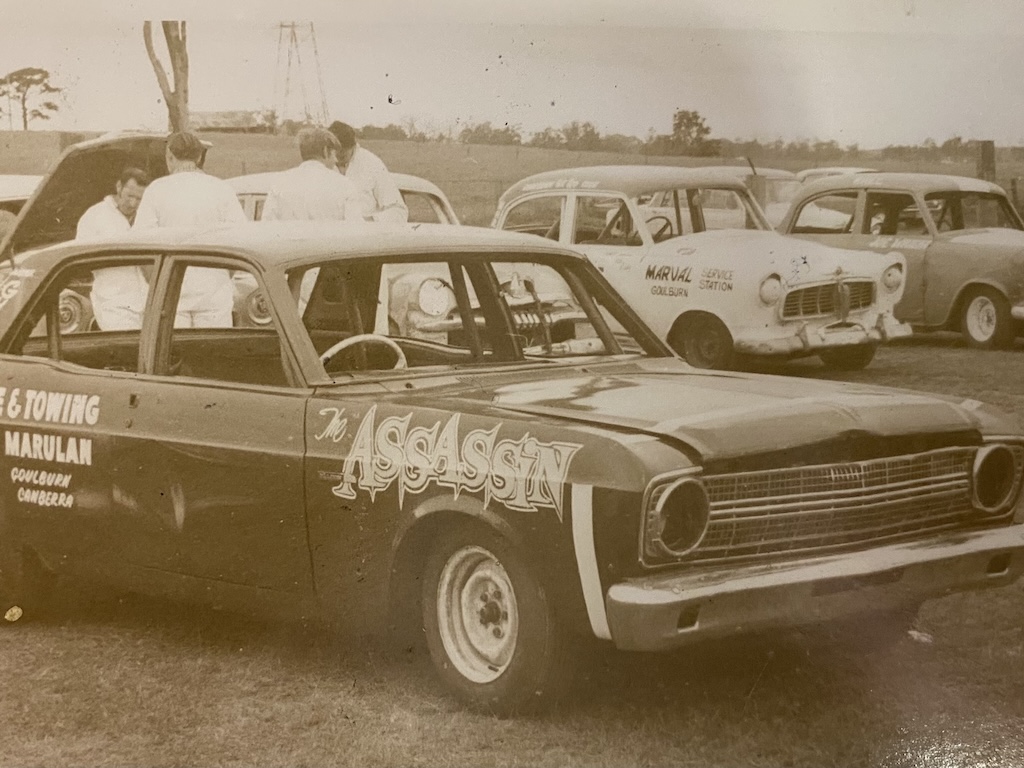
Motor wrecker Frank Nicastri took this burnt-out XT Flacon to the tip, only for Bill Martin to retrieve it, build a new motor for it and turn it into a racetrack winner. Frank’s son Tony named it The Assassin. Among many successes it won a production series at the Royal Sydney Showgrounds. Photo: Martin family collection.
“I went down and packed my tools up,” Bill said. “I said, ‘I’m not doing this.’”
He’s been in the motoring game more than 50 years and builds high-performance engines. He and Elaine employ their son Chris as a mechanic. Out the back is Bill’s speedway car in parts. But like its driver, it has many more miles ahead of it yet.
Original Article published by John Thistleton on About Regional.












